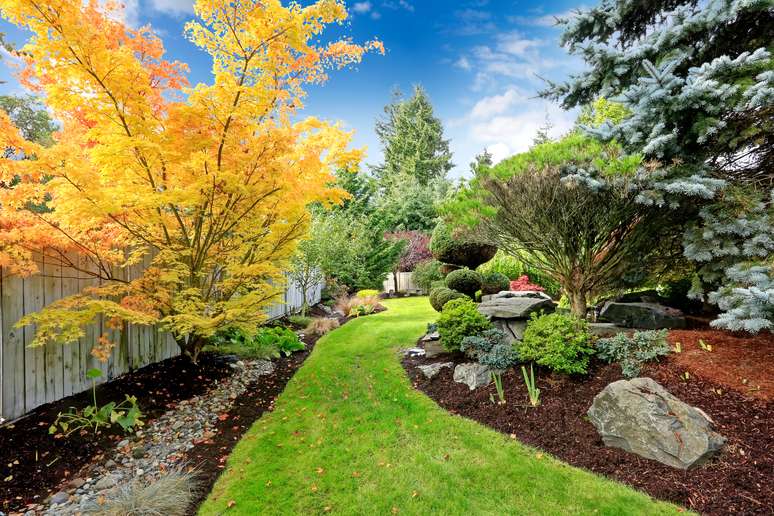Business Lists and Databases Available for Marketing and Research - Direct Mailing Emailing Calling
NAICS Code 541320 - Landscape Architectural Services
Government Level - NAICS 6-Digit - Updated to 2022 NAICSBusiness Lists and Databases Available for Marketing and Research
Business List Pricing Tiers
| Quantity of Records | Price Per Record | Estimated Total (Max in Tier) |
|---|---|---|
| 0 - 1,000 | $0.25 | Up to $250 |
| 1,001 - 2,500 | $0.20 | Up to $500 |
| 2,501 - 10,000 | $0.15 | Up to $1,500 |
| 10,001 - 25,000 | $0.12 | Up to $3,000 |
| 25,001 - 50,000 | $0.09 | Up to $4,500 |
| 50,000+ | Contact Us for a Custom Quote | |
What's Included in Every Standard Data Package
- Company Name
- Contact Name (where available)
- Job Title (where available)
- Full Business & Mailing Address
- Business Phone Number
- Industry Codes (Primary and Secondary SIC & NAICS Codes)
- Sales Volume
- Employee Count
- Website (where available)
- Years in Business
- Location Type (HQ, Branch, Subsidiary)
- Modeled Credit Rating
- Public / Private Status
- Latitude / Longitude
- ...and more (Inquire)
Boost Your Data with Verified Email Leads
Enhance your list or opt for a complete 100% verified email list – all for just $0.10 per email!
NAICS Code 541320 Description
This industry comprises establishments primarily engaged in planning and designing the development of land areas for projects, such as parks and other recreational areas; airports; highways; hospitals; schools; land subdivisions; and commercial, industrial, and residential areas, by applying knowledge of land characteristics, location of buildings and structures, use of land areas, and design of landscape projects. Source: Census.gov - NAICS 2022 compliant
NAICS Code 541320 - Landscape Architectural Services is a final level code of the “Professional, Scientific, and Technical Services” Sector. There are 6,988 companies verified as active in this industry in the USA with an estimated employment of 26,714 people.
Industry Sector
Professional, Scientific, and Technical ServicesAnnual Payroll
$1,549,823,000Total Revenue
$4,183,953,000SBA Size Standard
Annual Revenue Limit of $8,000,000Parent Category - 5-digit Level (less specific)
Marketing: NAICS Codes (8-digit) for Landscape Architectural Services
Access In-depth Industry Analysis: Reach out to companies and executives within these industries.
- Industry Companies Available
- 541320-01 - Horticultural Consultants 82
- 541320-02 - Interior Landscaping 38
- 541320-03 - Land Planning Services 269
- 541320-04 - Landscape Designers 5,690
- 541320-05 - Landscape Foresters 11
- 541320-06 - Lawn Consultants 59
- 541320-07 - Tree Consultants 51
- 541320-08 - Sprinklers-Irrigation Designers 35
- Industry Companies Available
- 541320-09 - Industrial Research 14
- 541320-11 - City Regional & Town Planners 255
- 541320-12 - Industrial Consultants 150
- 541320-13 - Industrial Developments 157
- 541320-14 - Concrete Hardscaping 151
- 541320-15 - Bank Designers & Consultants 16
- 541320-16 - Landscape Appraising & Consulting 10
Industry Examples of NAICS 541320
Common types of examples within NAICS Code 541320 - Landscape Architectural Services are:
- Architects' offices, landscape
- Architects' private practices, landscape
- Architectural services, landscape
- City planning services
- Garden planning services
- Golf course design services
- Industrial land use planning services
- Land use design services
- Land use planning services
- Landscape architects' offices
- Landscape architects' private practices
- Landscape architectural services
- Landscape consulting services
- Landscape design services
- Landscape planning services
- Ski area design services
- Ski area planning services
- Town planners' offices
- Town planning services
- Urban planners' offices
- Urban planning services
Industry Image
Example photo for industry NAICS 541320 - Landscape Architectural Services. This image represents an activity or product found in this industry.

Cross-References
Companies
SICCODE.com compiles comprehensive business data and executive contact leads for businesses within NAICS Code 541320 - Landscape Architectural Services. Some of the leading and most notable companies are listed below. To order a list of companies within NAICS Code 541320 - Landscape Architectural Services for marketing (postal mailing, telemarketing, emailing) or analytics-use, click on the link below to “Buy Business List”. Our data analysts are standing by to assist in your list setup and target marketing.
Industry Executives
Would you like to email executives in NAICS Code 541320 - Landscape Architectural Services? Below are some of the common job titles available to be targeted.
- Business Development
- Chairman
- C-Level
- Director
- Engineering
- Executive Director
- Facilities
- Finance
- Human Resource
- IT
- Manager
- Marketing
- Manufacturing
- Operations
- Owner
- Partner
- President
- Principal
- Purchasing
- Sales
- Vice President
For specific job title targeting, please provide details in the business list request form.
Questions & Answers
-
What is the SBA NAICS 541320 revenue limit?
Businesses with an annual revenue under $8,000,000 are considered small businesses by SBA.
-
How many active businesses operate in NAICS Code 541320?
There are 6,988 verified business locations operating primarily in this industry.
-
What was the total revenue for NAICS Code 541320?
In 2017 the total revenue for Landscape Architectural Services was $4,183,953,000
-
What was the annual payroll for NAICS Code 541320?
In 2017 the annual payroll for Landscape Architectural Services was $1,549,823,000
-
How many people work in NAICS Code 541320?
The number of reported paid employees is 26,714.